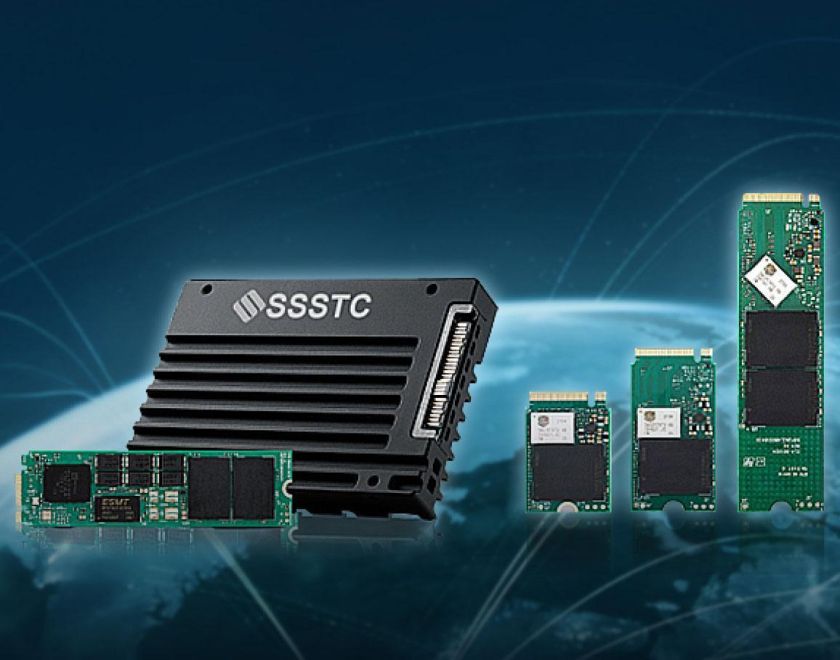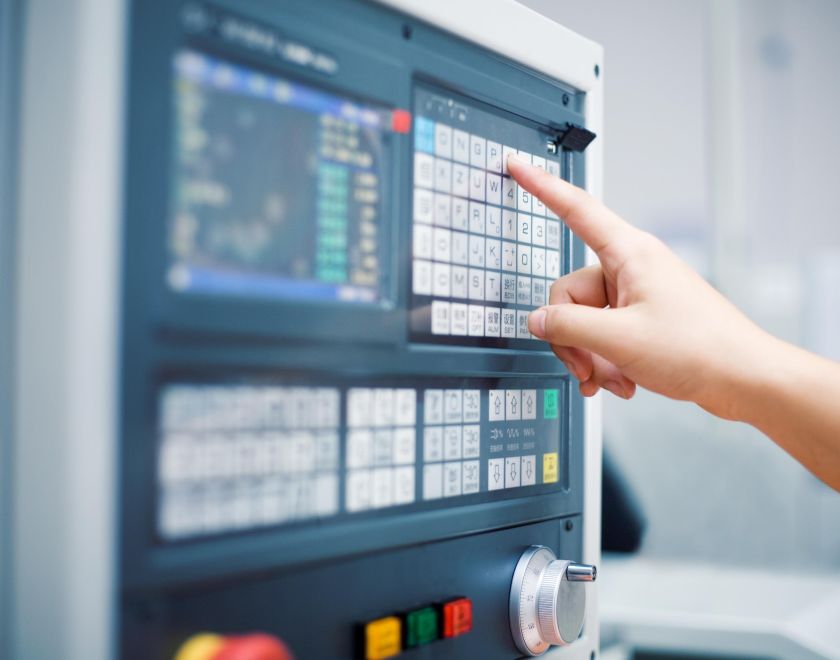
Surveillance
The Surveillance system is the all-important infrastructure equipment in today’s IoT (Internet of Things) applications in every aspect of our daily life. The Surveillance system is comprised of the camera devices, recording equipment, and backend monitoring and management system. It consists of Analogue Surveillance (also known as CCTV Surveillance) and IP Surveillance systems - both record videos but process video data in different ways.
The front-end device of the Analogue Surveillance system is an Analog Camera receiving the analog signal with DVR (Digital Video Recorder) as the recording device. The front-end device of the IP Surveillance system is an IP Camera (also known as IPCam) receiving the digital signal with NVR (Network Video Recorder) as the recording device. The difference between DVR and NVR is how they process video data. DVR systems process the video data at the recorder, whereas NVR systems encode and process the video data at the camera, then stream it to the recorder.
As the video surveillance technology continuously advances in the wake of the development trend of AI chips embedded in the IPCam, intelligent active-cognition Surveillance will play a vital role in the upcoming AIoT applications. Undoubtedly, the NVR system will be the mainstream technology in future video surveillance, but the DVR system, as a transitional product, will still be around for a while.
In the DVR system, the analog camera transmits analog signals through coaxial cables to the DVR device then the analog signals are converted to the digital format and stored in the hard disk. The DVR is a cable-based system in which coaxial cables, ethernet cables, power cables, signal cables, audio cables, etc. all need to connect to the DVR device. As analog signals very likely suffer loss over increased transmission distance. A DVR system is more suitable for applications in small to medium sized spaces.
Given the most prominent features of the DVR equipment are its powerful recording and storage functions, even with the emergence of the NVR, the DVR still occupies a significant market share. Hence different High-Definition analog cameras such as SDI, CVI, TVI, and AHD with High-Definition specifications were incessantly launched in the market. However, the uncompressed captured images resulting in the sheer volume of the back-end data would require larger storage spaces.
The NVR is an IP-based surveillance system with network cameras transmitting audio-visual content through ethernet cables or WiFi networks, while the visual and audio signals are simultaneously transmitted to the NVR device for storage. Each camera in the NVR system is a piece of network equipment that establishes transmission with the back-end management and storage equipment through the automatically designated IP addresses. Unlike the DVR system requiring dedicated cables for each camera, the NVR system facilitates the transmission from the cameras through a router with a single cable to the backend host.
It is easy to establish the NVR architecture in either cabled or wireless systems, as the cabled system only requires network and power cables; for those with the PoE configuration, an additional cable for power supply is not necessary. As a complete network surveillance system, the NVR is unbounded by any geographical limitation through remote PCs and mobile devices, regardless of the physical sizes of the surveillance spaces. Furthermore, the NVR device can be an ordinary PC integrated with storage devices and surveillance software to create numerous applications, while NAS, cloud storage, remote backup, etc., can make storage more efficient.
IP Surveillance System
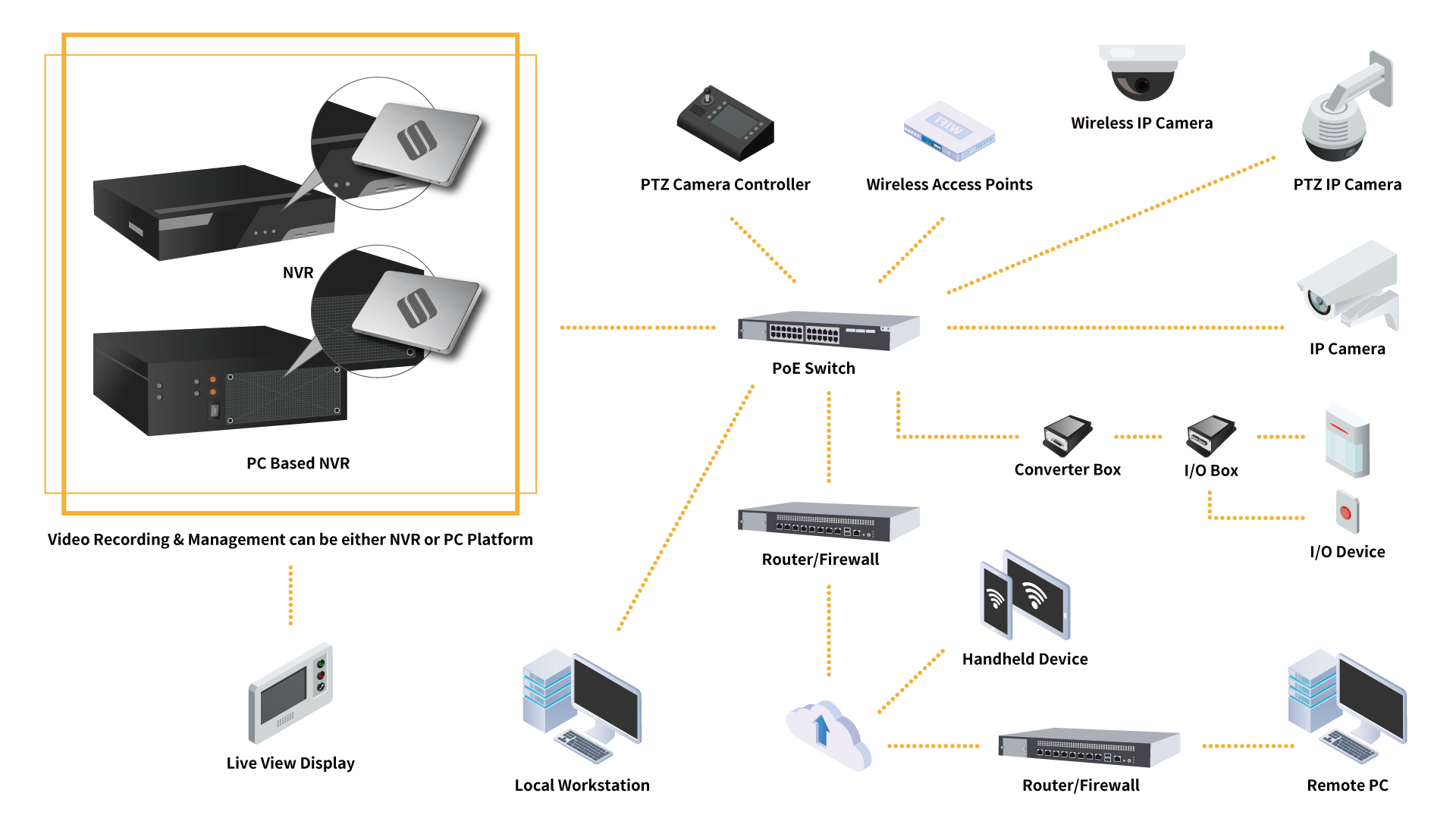
Analogue Surveillance System
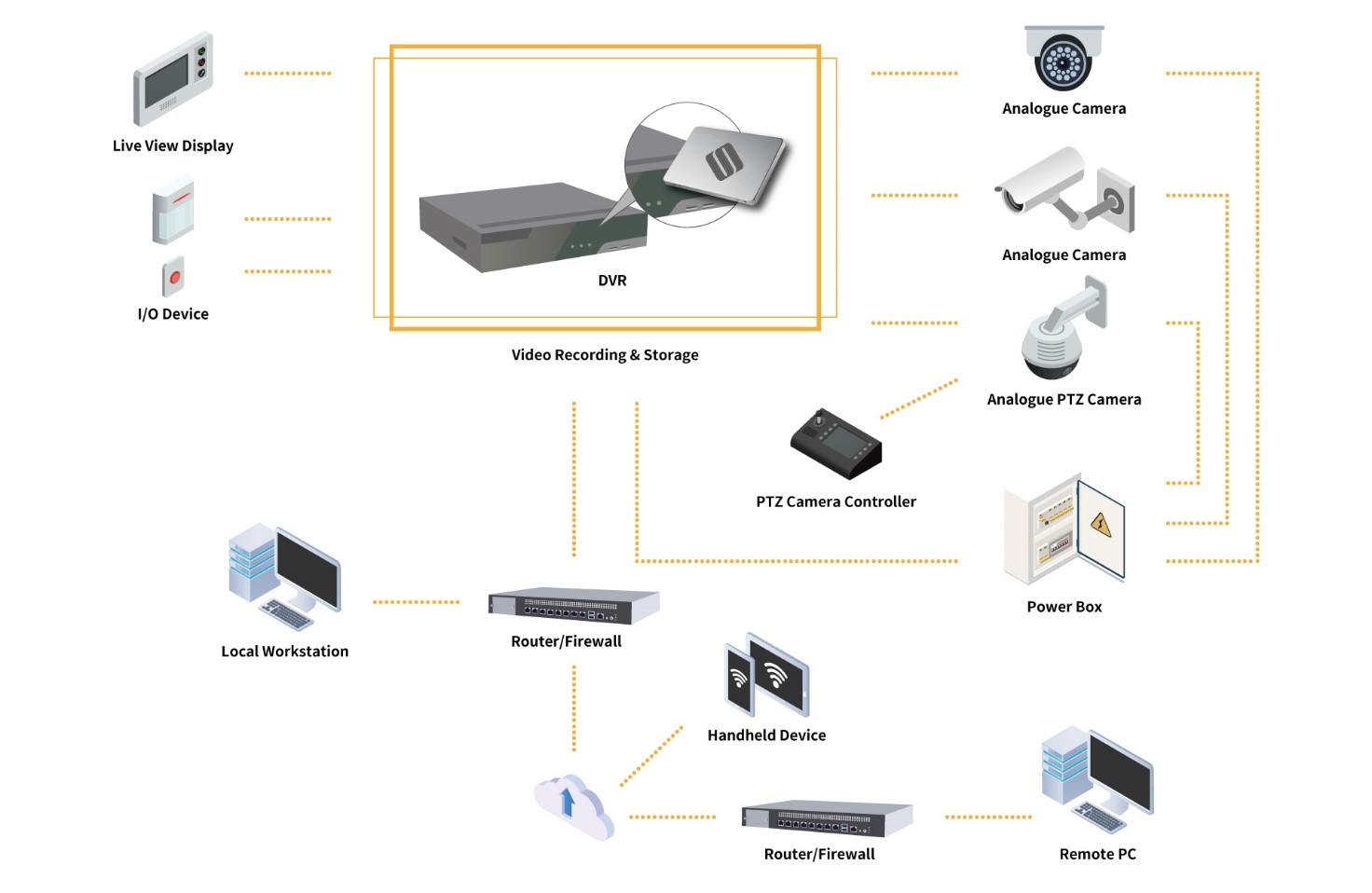
With the increase in the resolution of the images captured by the surveillance systems, in addition to the introduction of intelligent image analysis technologies such as license plate recognition and human facial recognition, the functions of surveillance systems have become increasingly powerful, which require faster transmission speed and larger storage capacity. Therefore, whether it be the NVR or DVR, whether the system is newly-built or expanded, the type and capacity of the storage device has become especially critical. The large-capacity high-speed SSDs by Solid State Storage Technology Corporation can meet the storage requirements of surveillance systems. Apart from the larger storage capacity, the sequential read-write speed of SATA SSDs by Solid State Storage Technology Corporation is five times faster than that of the conventional HDDs, and that of PCIe® 4.0 NVMe™ SSDs are sixty-eight times faster, to effectively increase the file access performance of the surveillance systems.
24/7 video recording via multiple cameras has been the broadly deployed configuration for surveillance systems that require storage devices of stable performance and enormous capacity to ensure the long-term secured storage of the captured data. Before factory exit, the SSD products by Solid State Storage Technology Corporation have all passed reliability tests of higher standards through the highest-class NEOSEM testing equipment than those of the industry. In additional to extreme temperature endurance testing that complies with industry standards to provide more stable, enduring, high-performance, and power-saving SSD products in meeting the needs of video surveillance applications.
The SSD products by Solid State Storage Technology Corporation can be used in surveillance systems installed in harsh environments such as Vehicle Surveillance, which requires the features of vibration-proof, shock-proof, high-temperature resistant, etc. The high-specification SSDs produced by Solid State Storage Technology Corporation comply with the Anti-Vibration standard of the US military-grade standard, MIL-STD-810G, and Anti-Shock standards of the US military-grade standard, MIL-STD-202G and MIL-STD-883 to meet the requirements for the applications of vehicle-borne Surveillance.
Successful Case

A US renowned IoT logistics fleet management system solution provider has introduced the large-capacity SATA 2.5” wide temperature SSDs produced by Solid State Storage Technology into its fleet management NVR surveillance system as the storage device for the recorded footage files.
SSD Model: K8 SATA 2.5-inch SSD
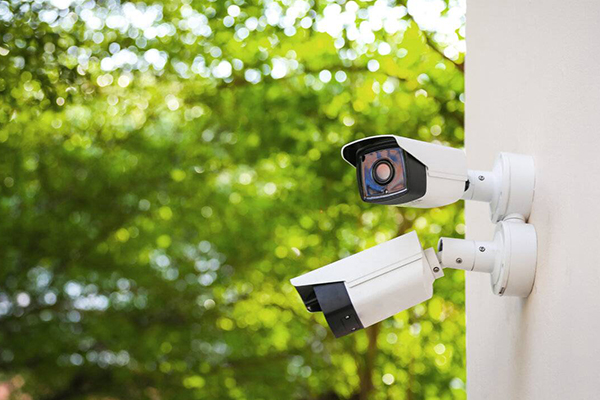
A top-tier US cloud-management solution provider has integrated the wide temperature range SSD solutions by Solid State Storage Technology Corporation with its IP Camera system that has passed a stringent 24/7 operation longevity test.
SSD Model: CVB SATA M.2 2280 SSD
SATA SSD
128GB / 256GB / 512GB / 1024GB / 2048GB
NAND Flash: 3D TLC NAND Flash
Interface: SATA 3 (6Gb/s)
Sequential Read: UP to 500 MB/s
Sequential Write: UP to 260 MB/s
SATA SSD
128GB / 256GB / 512GB / 1024GB / 2048GB
NAND Flash: 3D TLC NAND Flash
Interface: SATA 3 (6Gb/s)
Sequential Read: UP to 500 MB/s
Sequential Write: UP to 260 MB/s
SATA SSD
40GB / 80GB / 128GB / 160GB / 256GB / 320GB / 640GB
NAND Flash: 3D pSLC(TLC)
Interface: SATA 3 (6Gb/s)
Sequential Read: Up to 550 MB/s
Sequential Write: Up to 510 MB/s
SATA SSD
40GB / 80GB / 160GB / 320GB / 640GB
NAND Flash: 3D pSLC(TLC)
Interface: SATA 3 (6Gb/s)
Sequential Read: Up to 550 MB/s
Sequential Write: Up to 510 MB/s
SATA SSD
40GB / 80GB / 160GB / 256GB / 320GB / 640GB
NAND Flash: 3D pSLC(TLC)
Interface: SATA 3 (6Gb/s)
Sequential Read: UP to 550 MB/s
Sequential Write: UP to 510 MB/s
SATA SSD
120GB / 128GB / 256GB / 480GB / 512GB / 960GB / 1024GB / 2048GB
NAND Flash: 3D TLC NAND Flash
Interface: SATA 3 (6Gb/s)
Sequential Read: UP to 550 MB/s
Sequential Write: UP to 510 MB/s
NVMe™ SSD
80GB / 160GB / 320GB
NAND Flash: 3D pSLC(TLC)
Interface: PCIe® Gen4 x4
Sequential Read: UP to 3700 MB/s
Sequential Write: UP to 2600 MB/s
NVMe™ SSD
40GB / 80GB / 160GB / 320GB / 640GB /1280GB
NAND Flash: 3D TLC NAND Flash
Interface: PCIe® Gen3 x4
Sequential Read: 3,100 MB/s
Sequential Write: 1,500 MB/s
NVMe™ SSD
40GB / 80GB / 160GB / 320GB / 640GB /1280GB
NAND Flash: 3D TLC NAND Flash
Interface: PCIe® Gen3 x4
Sequential Read: 3,100 MB/s
Sequential Write: 1,500 MB/s
NVMe™ SSD
80GB / 160GB / 320GB
NAND Flash: 3D TLC NAND Flash
Interface: PCIe® Gen4 x4
Sequential Read: UP to 3,500 MB/s
Sequential Write: UP to 2,100 MB/s
NVMe™ SSD
128GB / 256GB / 512GB / 1024GB / 2048GB /4096GB
NAND Flash: 3D TLC NAND Flash
Interface: PCIe® Gen3 x4
Sequential Read: 3,100 MB/s
Sequential Write: 1,500 MB/s
NVMe™ SSD
128GB / 256GB / 512GB / 1024GB / 2048GB /4096GB
NAND Flash: 3D TLC NAND Flash
Interface: PCIe® Gen3 x4
Sequential Read: 3,100 MB/s
Sequential Write: 1,500 MB/s
NVMe™ SSD
256GB / 512GB / 1024GB / 2048GB
NAND Flash: 3D TLC NAND Flash
Interface: PCIe® Gen4 x4
Sequential Read: UP to 6,800 MB/s
Sequential Write: UP to 4,800 MB/s
NVMe™ SSD
240GB / 256GB /480GB/ 512GB / 960GB/ 1024GB
NAND Flash: 3D TLC NAND Flash
Interface: PCIe® Gen4 x4
Sequential Read: UP to 3,700 MB/s
Sequential Write: UP to 2,600 MB/s
NVMe™ SSD
256GB / 512GB / 1024GB
NAND Flash: 3D TLC NAND Flash
Interface: PCIe® Gen4 x4
Sequential Read: UP to 3,700 MB/s
Sequential Write: UP to 2,600 MB/s
NVMe™ SSD
128GB / 256GB / 512GB
NAND Flash: 3D TLC NAND Flash
Interface: PCIe® Gen3 x4
Sequential Read: UP to 2,000 MB/s
Sequential Write: UP to 1,100 MB/s
NVMe™ SSD
128GB / 256GB / 512GB/ 1024GB
NAND Flash: 3D TLC NAND Flash
Interface: PCIe® Gen3 x4
Sequential Read: UP to 2,000 MB/s
Sequential Write: UP to 1,100 MB/s
NVMe™ SSD
128GB / 256GB / 512GB
NAND Flash: 3D TLC NAND Flash
Interface: PCIe® Gen3 x4
Sequential Read: UP to 3,700 MB/s
Sequential Write: UP to 2,600 MB/s
NVMe™ SSD
256GB / 512GB / 1024GB / 2048GB
NAND Flash: 3D TLC NAND Flash
Interface: PCIe® Gen4 x4
Sequential Read: UP to 6,000 MB/s
Sequential Write: UP to 5,300 MB/s
NVMe™ SSD
256GB / 512GB / 1024GB / 2048GB
NAND Flash: 3D TLC NAND Flash
Interface: PCIe® Gen4 x4
Sequential Read: UP to 6,000 MB/s
Sequential Write: UP to 5,300 MB/s
SATA SSD
128GB / 256GB / 512GB / 1024GB
NAND Flash: 3D TLC NAND Flash
Interface: SATA 3 (6Gb/s)
Sequential Read: UP to 550 MB/s
Sequential Write: UP to 510 MB/s
SATA SSD
128GB / 256GB / 512GB
NAND Flash: 3D TLC NAND flash
Interface: SATA 3 (6Gb/s)
Sequential Read: UP to 550 MB/s
Sequential Write: UP to 450 MB/s
SATA SSD
128GB / 256GB / 512GB
NAND Flash: 3D TLC NAND Flash
Interface: SATA 3 (6Gb/s)
Sequential Read: UP to 550 MB/s
Sequential Write: UP to 450 MB/s
NVMe™ SSD
128GB / 256GB / 512GB
NAND Flash: 3D TLC NAND Flash
Interface: PCIe® Gen3 x4
Sequential Read: UP to 2,000 MB/s
Sequential Write: UP to 1,100 MB/s
NVMe™ SSD
256GB / 512GB / 1024GB / 2048GB
NAND Flash: 3D TLC NAND Flash
Interface: PCIe® Gen4 x4
Sequential Read: 6,000 MB/s
Sequential Write: 5,300 MB/s
SATA
128GB / 256GB / 512GB / 1024GB
NAND Flash: 3D TLC NAND Flash
Interface: SATA 3 (6Gb/s)
Sequential Read: UP to 550 MB/s
Sequential Write: UP to 510 MB/s
SATA SSD
128GB / 256GB / 512GB / 1024GB / 2048GB
NAND Flash: 3D TLC NAND Flash
Interface: SATA 3 (6Gb/s)
Sequential Read: UP to 550 MB/s
Sequential Write: UP to 510 MB/s
SATA SSD
128G / 256GB / 512GB / 1024GB / 2048GB
NAND Flash: 3D TLC NAND Flash
Interface: SATA 3 (6Gb/s)
Sequential Read: UP to 550 MB/s
Sequential Write: UP to 510 MB/s







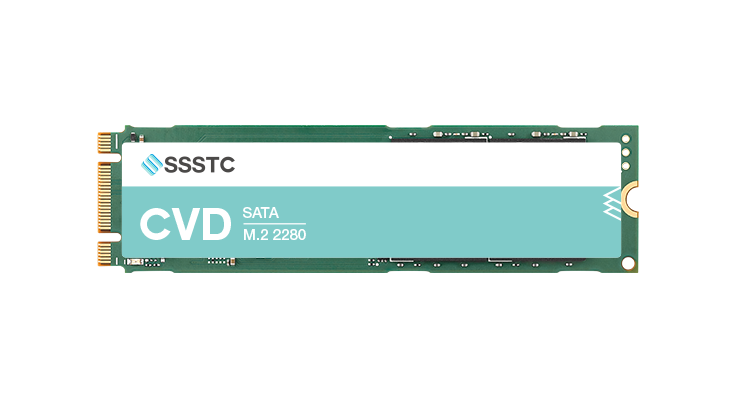
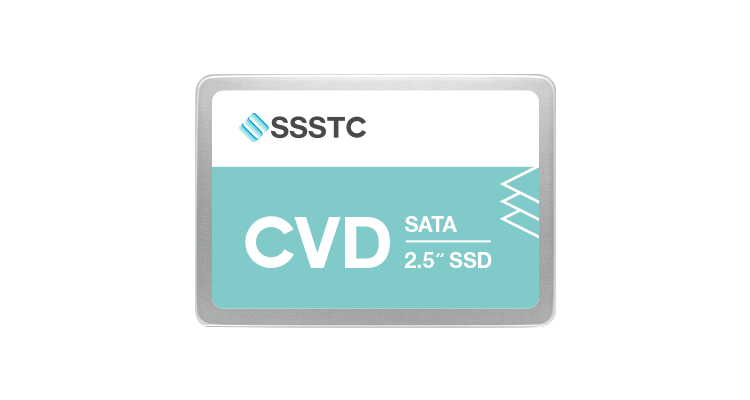
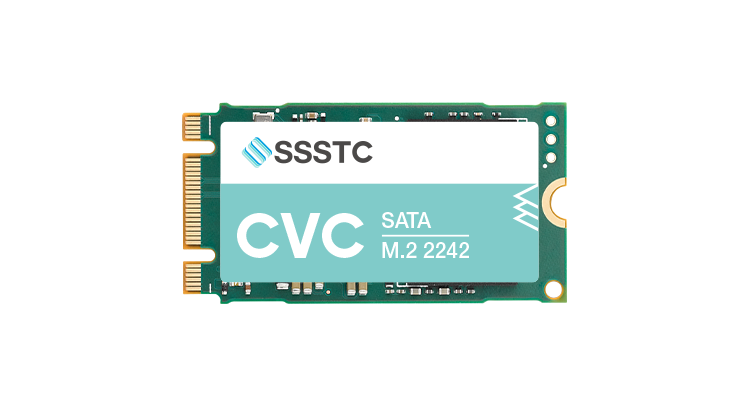
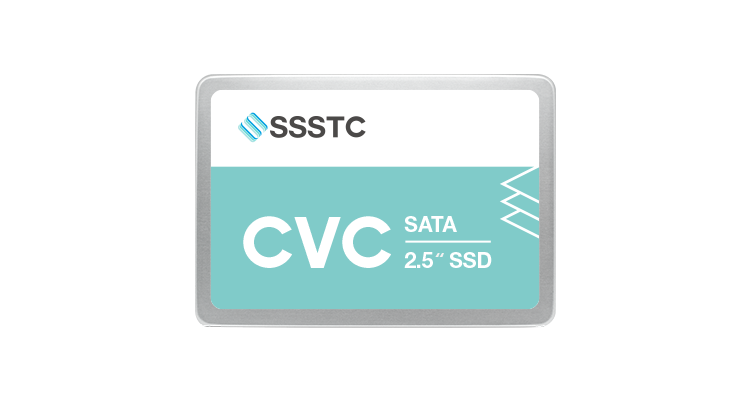
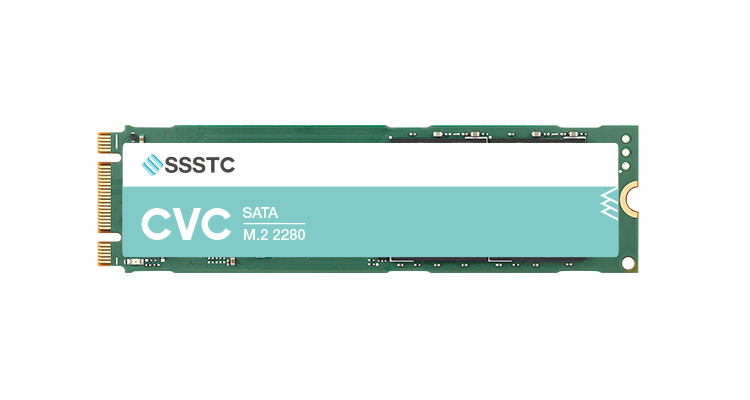
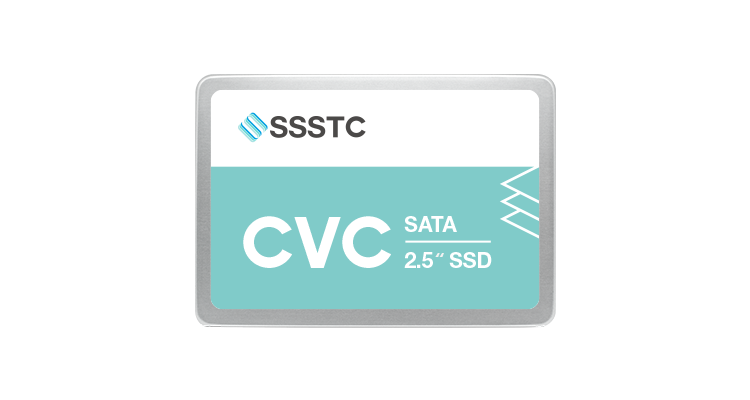
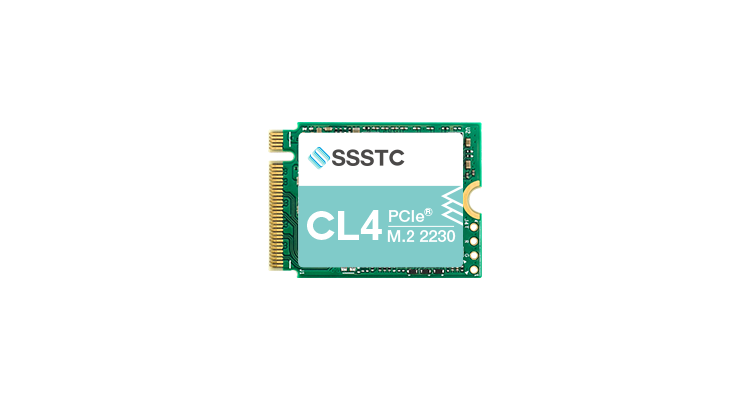
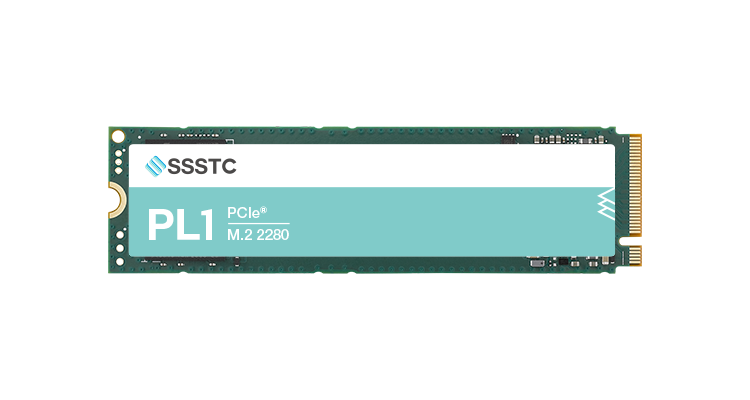
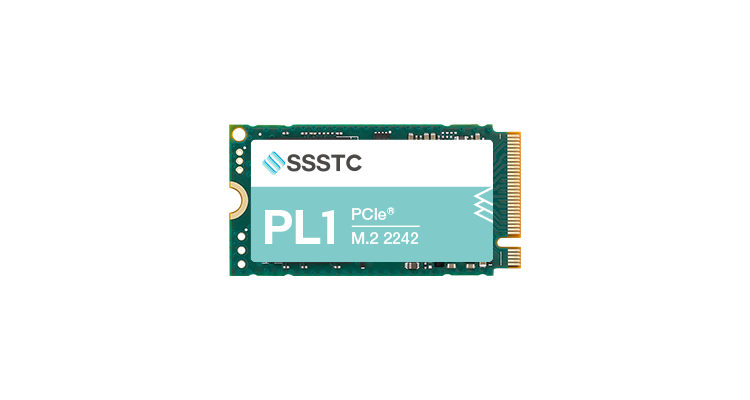
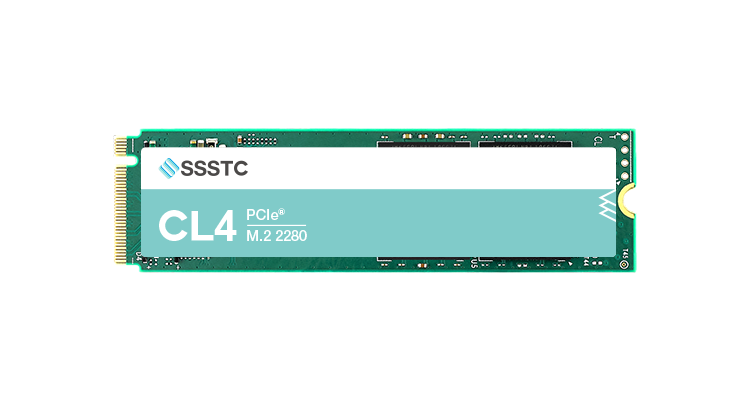
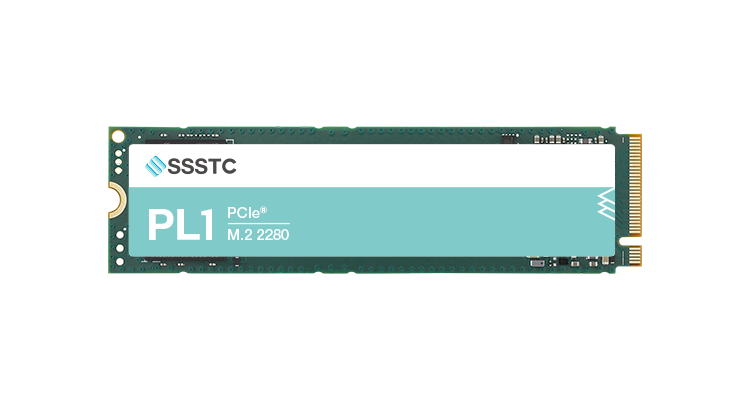
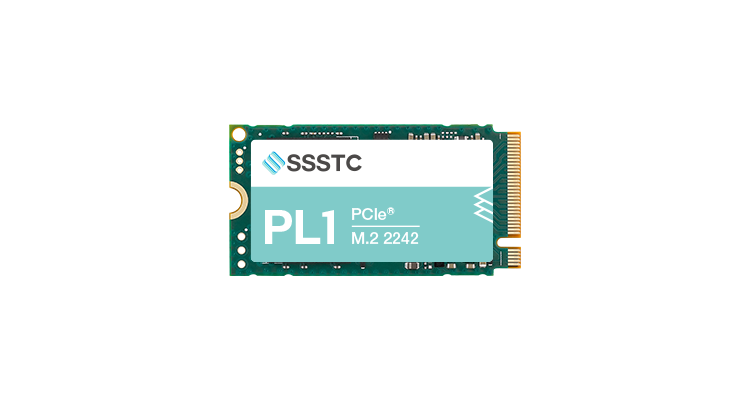
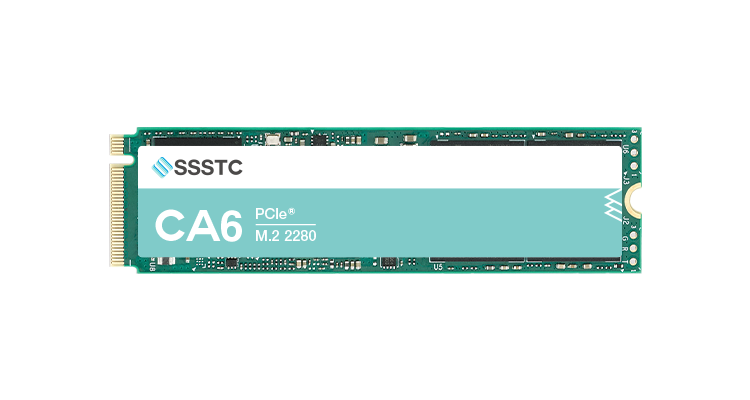
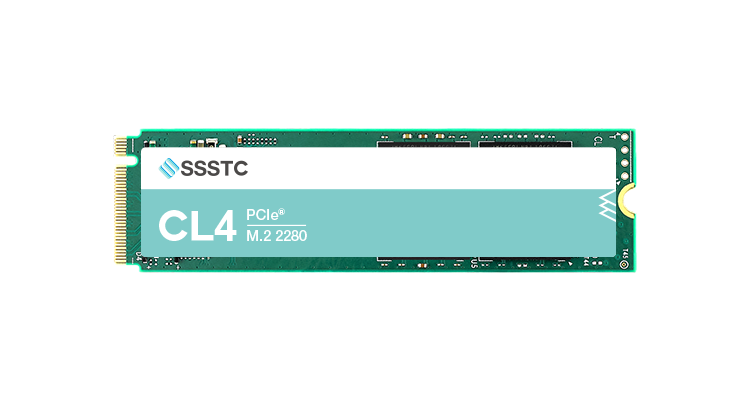
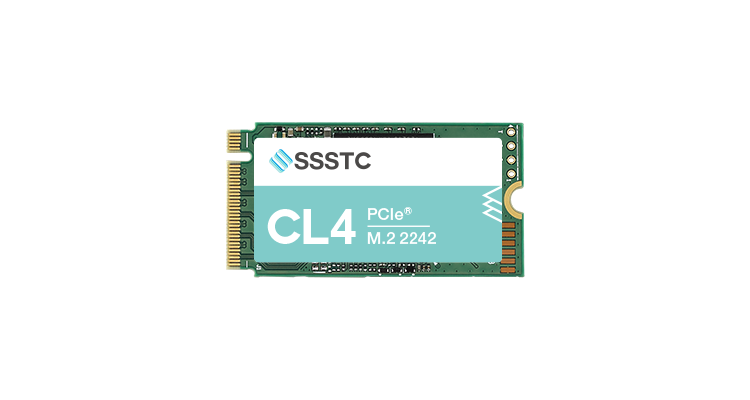
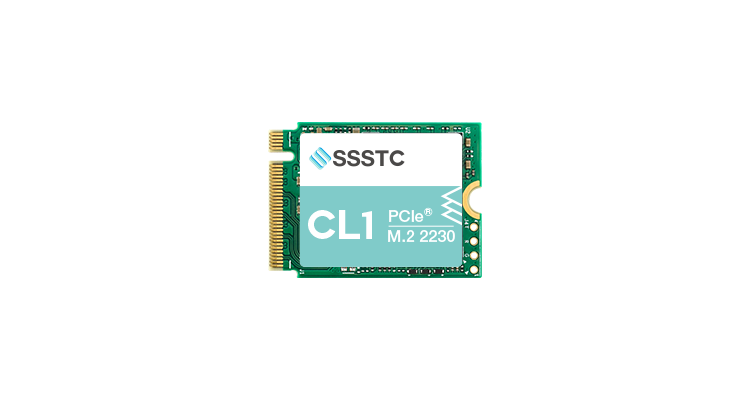
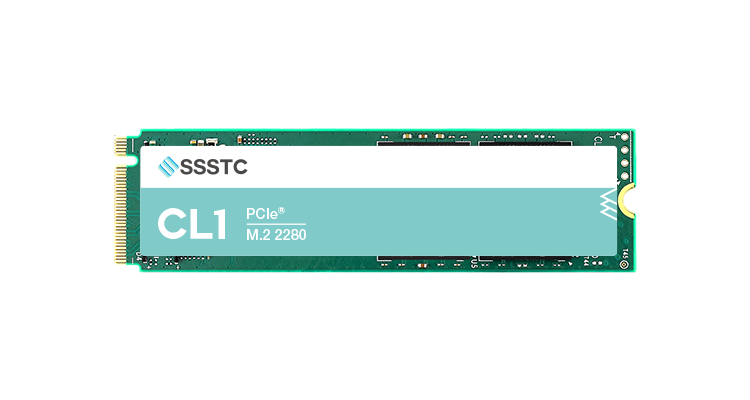
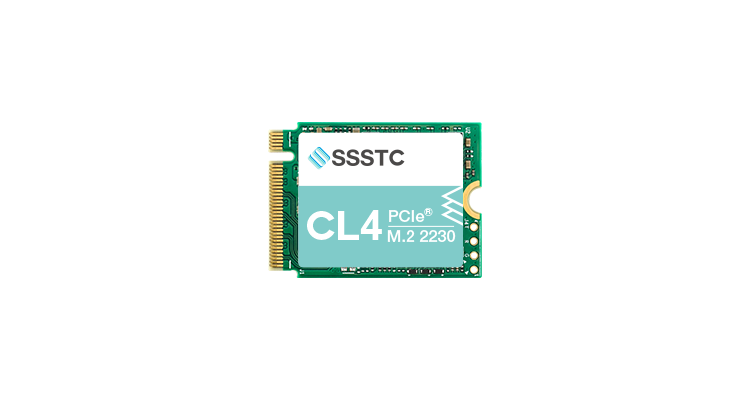
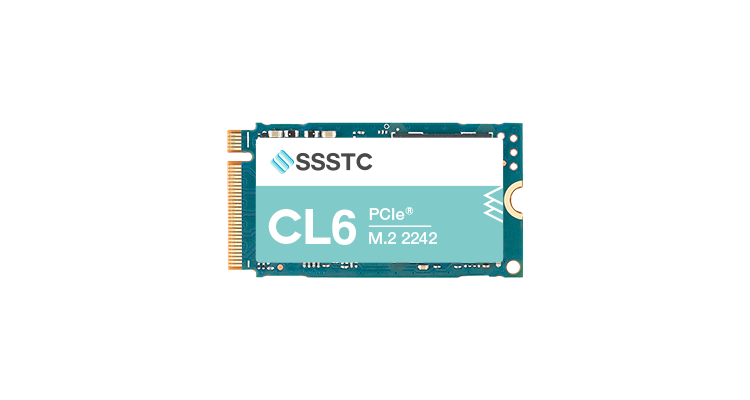
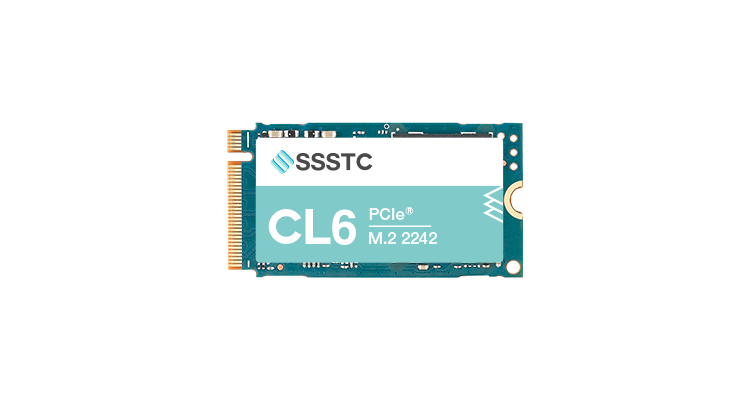
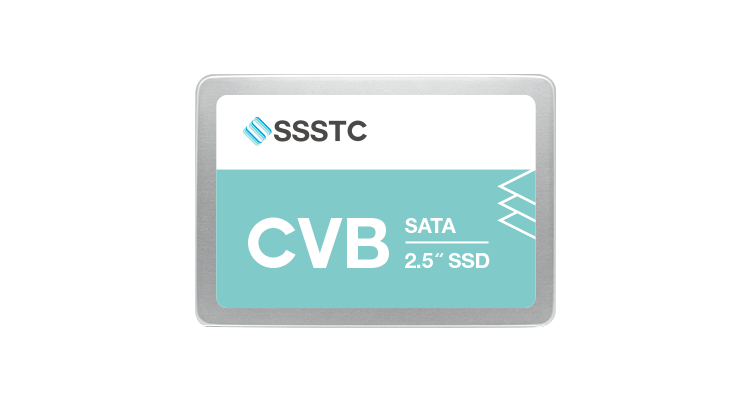
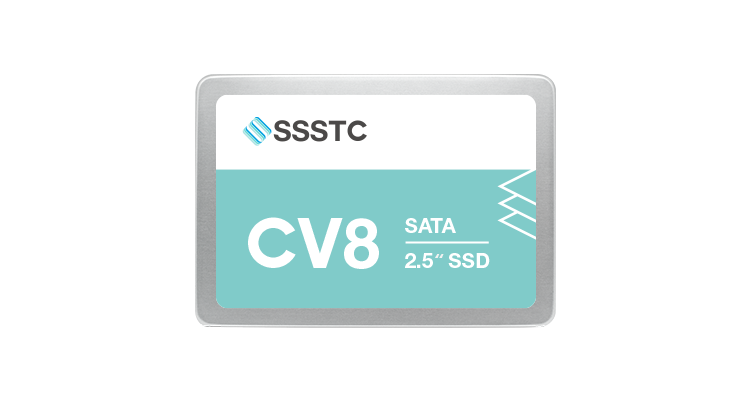
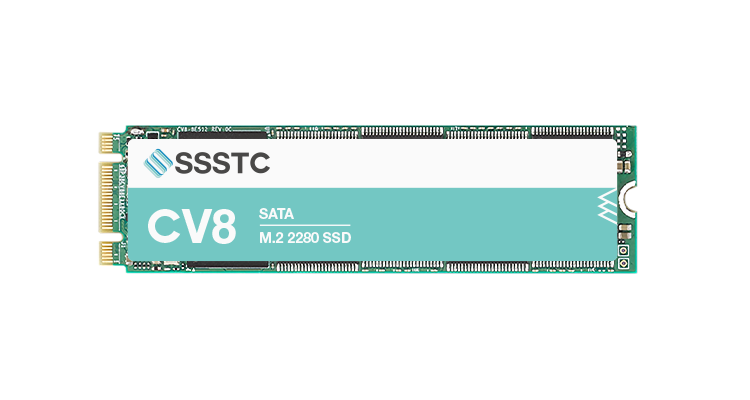
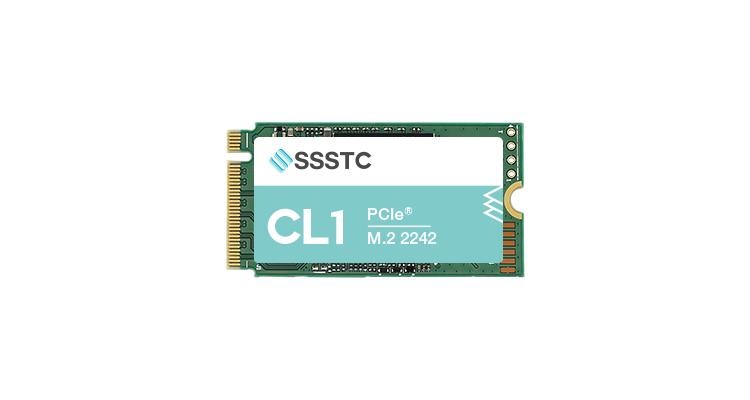
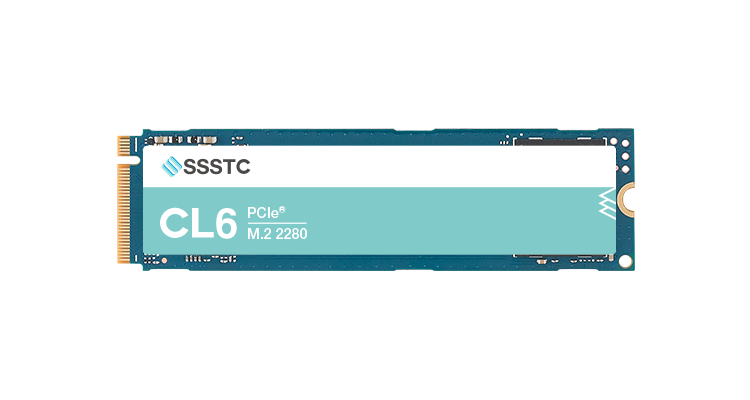
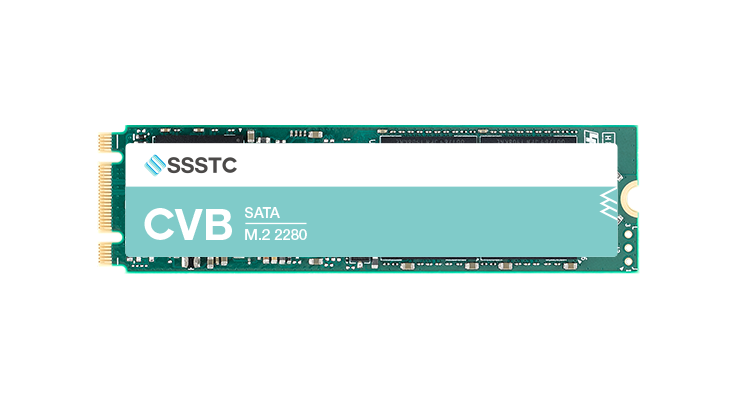
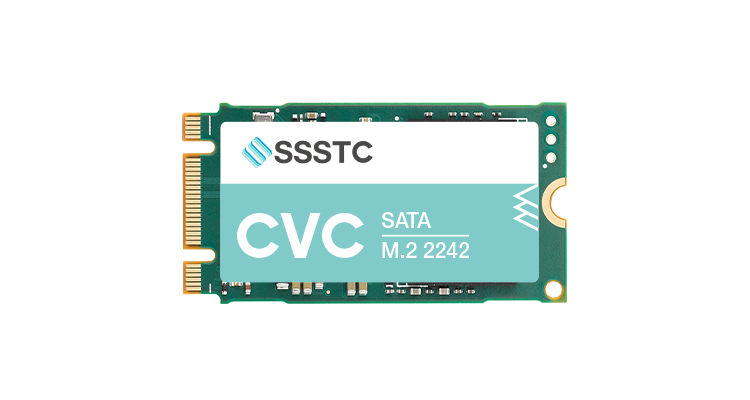
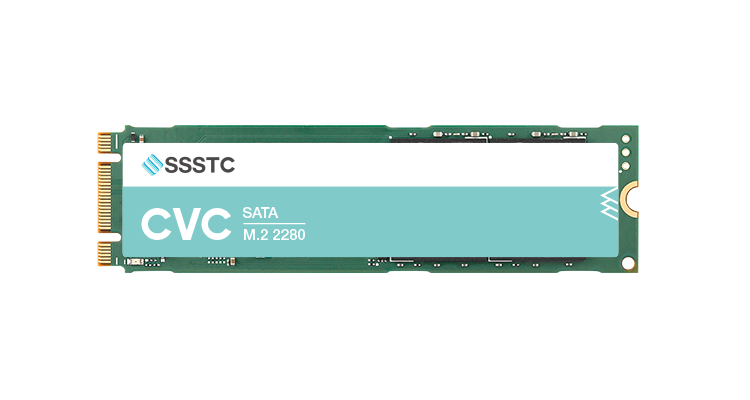
__24C15hqqtC.png)
__24C15wOdCC.png)

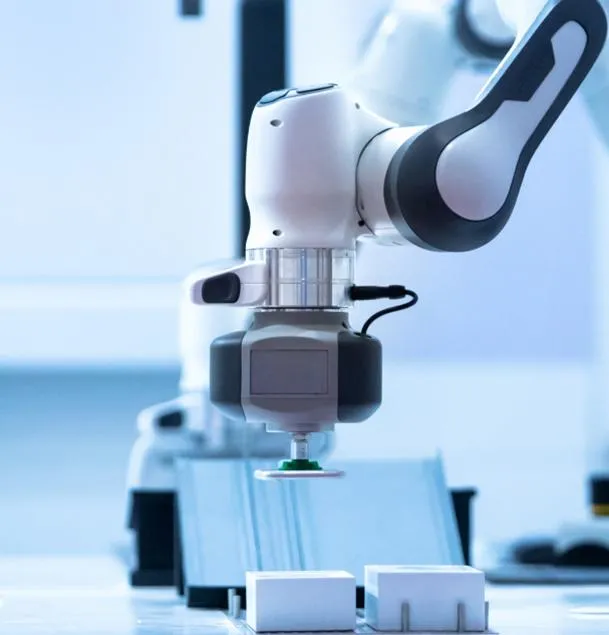







__24C05XQ2my.jpg)


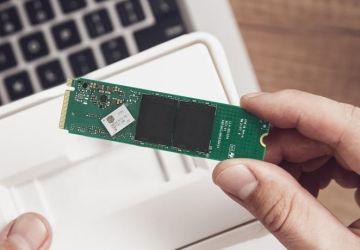



__24C05fplcZ.png)
__24C05vgHYC.png)
